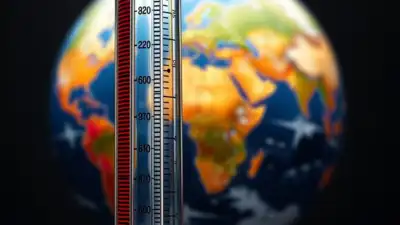
The global climate crisis is intensifying at an alarming pace, with meteorological agencies predicting that 2025 could be one of the hottest years in recorded history. According to recent projections, global temperatures are expected to soar beyond previous limits, increasing the risk of extreme weather events, environmental degradation, and public health crises.
This unsettling trend is a stark reminder that humanity is entering a critical phase in the fight against climate change. With greenhouse gas concentrations continuing to rise, the effects of global warming are no longer abstract forecasts — they are present-day realities.
The Warming Trend: A Scientific Breakdown
The World Meteorological Organization (WMO) and other leading climate institutions have confirmed that Earth’s average temperature has steadily risen over the last decade. In fact, each of the past five years ranks among the hottest on record. The upward trajectory is expected to continue in 2025, potentially pushing global temperatures to levels 1.5°C or even 2°C above pre-industrial averages.
The record-breaking temperatures are driven primarily by increased greenhouse gas emissions from human activities — mainly the burning of fossil fuels, deforestation, and industrialization. These gases trap heat in the atmosphere, disrupting Earth’s natural climate regulation mechanisms.
Impacts of Rising Temperatures
The climate change impact of surging global temperatures extends across every continent. Among the most immediate consequences are:
Extreme Weather Events: Heatwaves, wildfires, floods, and hurricanes are becoming more frequent and intense.
Melting Ice and Rising Seas: Arctic ice is diminishing at an unprecedented rate, contributing to rising sea levels that threaten coastal regions.
Agricultural Disruption: Changing climate patterns are reducing crop yields and increasing food insecurity in vulnerable regions.
Public Health Emergencies: Higher temperatures are exacerbating respiratory illnesses, spreading vector-borne diseases, and increasing heat-related mortality.
Tech’s Role in Fighting the Climate Crisis
As the global climate crisis escalates, technology is playing a vital role in both mitigation and adaptation. Innovations in sustainable technology are helping nations reduce their carbon footprints and transition to greener economies.
1. Renewable Energy Systems
Solar, wind, hydro, and geothermal energy systems are rapidly replacing fossil fuels. Countries investing in renewables are seeing not just environmental benefits but also economic growth through job creation in the green sector.
2. Smart Climate Forecasting
With the help of AI and big data, climate forecasting is becoming more precise. Predictive models now incorporate satellite data and machine learning algorithms to anticipate weather extremes and inform disaster response strategies.
3. Green Infrastructure
Urban planning now includes eco-friendly materials, energy-efficient buildings, and smart transportation systems to curb emissions and enhance climate resilience.
4. Carbon Capture and Storage
Technologies that capture and store carbon dioxide from industrial processes are gaining traction. While still in developmental stages, these solutions are vital to achieving net-zero emissions by mid-century.
Policy and Global Cooperation
Combating the global climate crisis also requires robust policy interventions and international collaboration. The Paris Agreement remains the cornerstone of global climate action, urging nations to limit warming to below 2°C.
Nations are urged to submit more ambitious Nationally Determined Contributions (NDCs) and commit to net-zero targets by 2050. Support for developing countries, climate financing, and global emission tracking are also critical components of these cooperative efforts.
What Individuals and Businesses Can Do
While governmental action is crucial, individual and corporate responsibility cannot be overlooked. Everyone has a role to play in addressing the climate emergency:
Reduce Energy Consumption: Use energy-efficient appliances and reduce unnecessary electricity usage.
Embrace Sustainable Transport: Walk, cycle, or use public transport whenever possible.
Support Green Brands: Purchase from companies committed to eco-friendly practices.
Advocate for Change: Support policies and leaders who prioritize climate action.
The Road Ahead
The global climate crisis is not a distant threat — it’s happening now, and 2025 could be a turning point. Without immediate and coordinated efforts, we risk crossing irreversible environmental thresholds.
However, the future is not set in stone. Through innovation, education, and collective action, it’s still possible to avert the worst consequences of climate change impact. The road ahead demands resilience, vision, and above all, urgent action.
Conclusion
As the world prepares for record-breaking temperatures in 2025, the message is clear: The global climate crisis can no longer be ignored or delayed. It’s a challenge that demands our full attention and most advanced technological capabilities.
By leveraging sustainable technology, refining climate forecasting, and fostering international cooperation, there is still hope to reverse the trajectory. What’s needed now is the will — from governments, industries, and individuals — to act boldly and decisively.